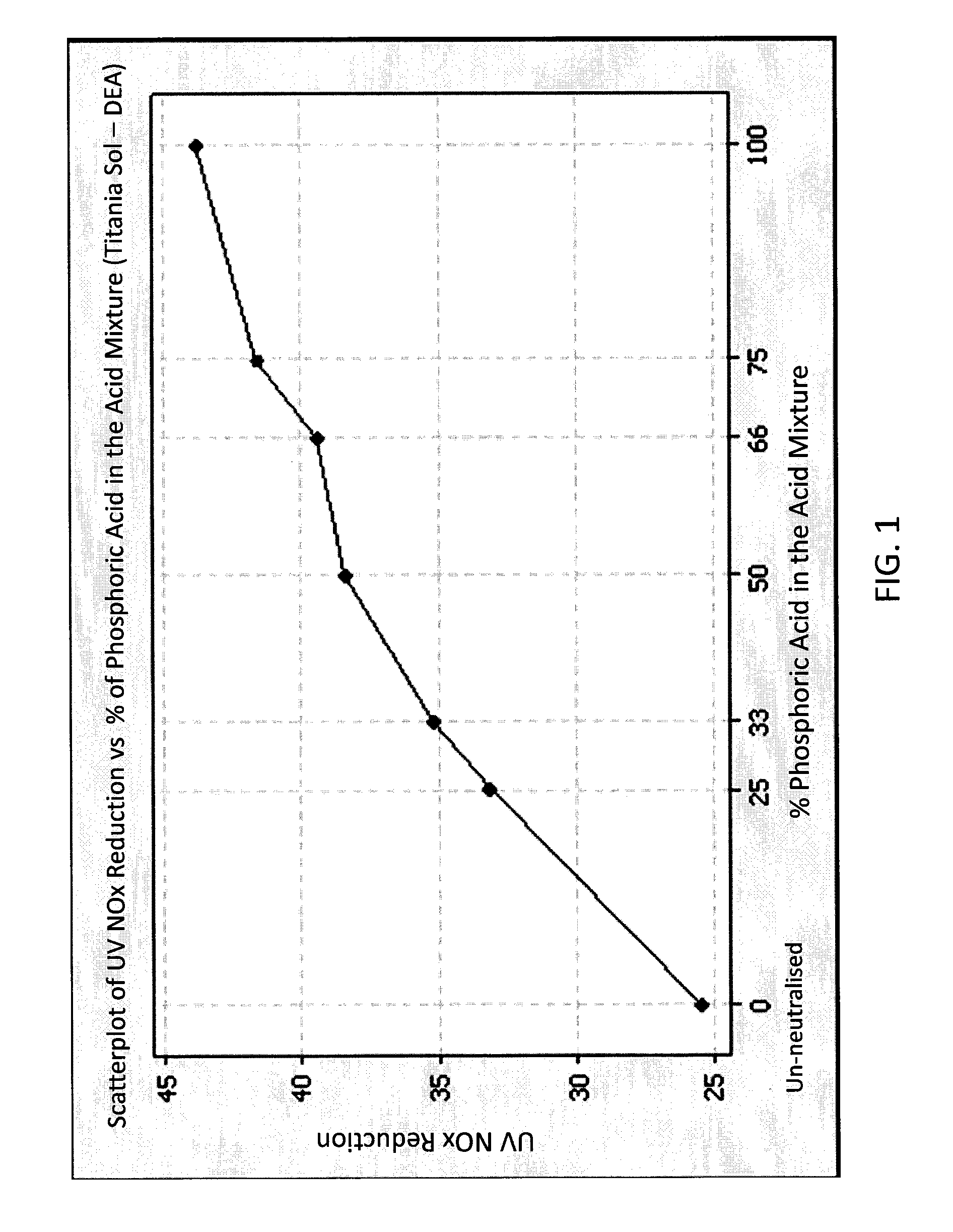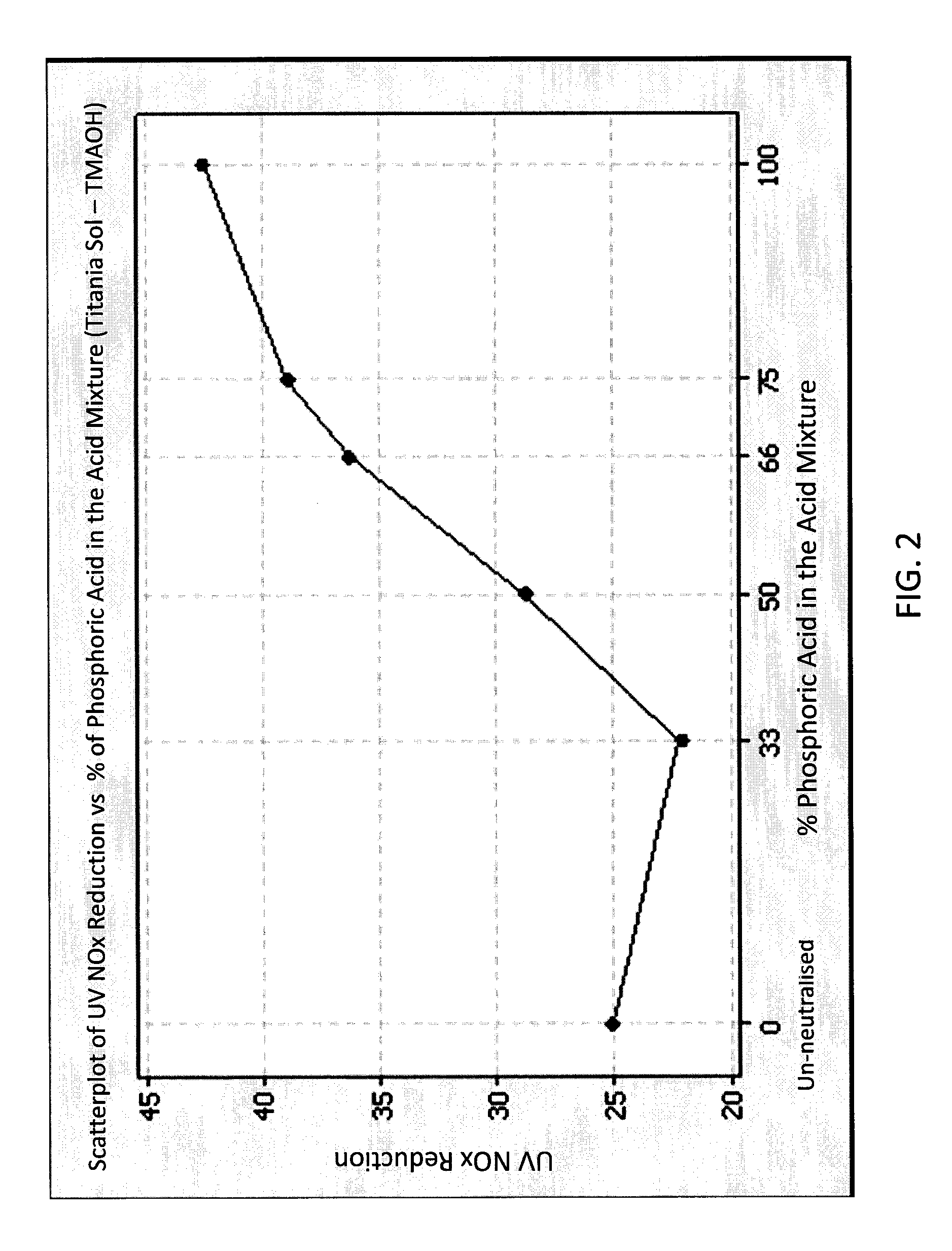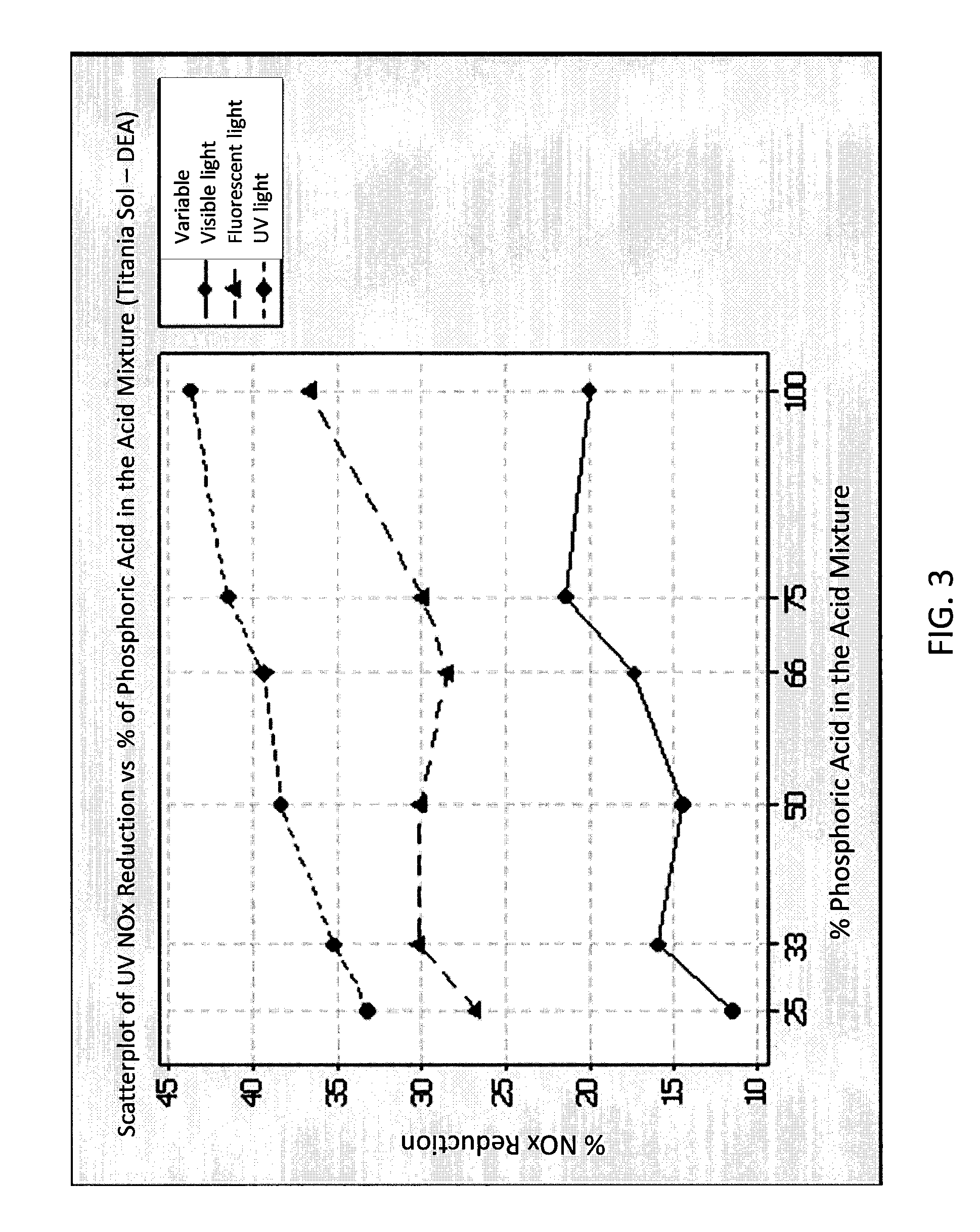Neutral, Stable and Transparent Photocatalytic Titanium Dioxide Sols
a photocatalytic and titanium dioxide technology, applied in the direction of organic compounds/hydrides/coordination complex catalysts, physical/chemical process catalysts, metal/metal-oxides/metal-hydroxide catalysts, etc., can solve the problems of difficult use of titanium dioxide sols, strong and irritating pungent, smell and flammability under certain conditions
- Summary
- Abstract
- Description
- Claims
- Application Information
AI Technical Summary
Benefits of technology
Problems solved by technology
Method used
Image
Examples
example 1
[0080]200 g of un-neutralized titania sol having product designation CristalACTiv™ manufactured by Cristal Global (in which titania was in a weight % of 17.5±2.5 at a pH of 11.5±1) and diethyl amine as an alkaline peptizing agent were placed into a baffled mixing container and stirred using an impellor mixer, to provide movement and agitations throughout the whole volume. A pH probe was positioned to provide readings of the mixed solution. The acid mixtures of 5M phosphoric acid and 5M acetic acid were prepared. 100 g of each acid mixture were made and labeled according to the % (by mass) of the amount of 5M phosphoric acid in the mixture as shown in Table 1.
TABLE 1Acid Compositionsg, 5M Phosphoricg, 5M AceticMix Labelacidacid25%257533%336750%505066%663475%7525100%1000
[0081]The acid mixture was added at a substantially constant rate (about 0.5-0.7 g / min) equivalent to 0.25-0.35% of the sol mass per minute. Acid addition was slowed when a pH value of about 9.0 was reached so as to ob...
example 2
[0082]In order to investigate the photocatalytic activity of coatings prepared from the sols according to the presently claimed and disclosed inventive concept(s), the neutralized sols of Example 1, as well as a similarly prepared titania sol as that of Example 1 but containing tetramethylammonium hydroxide (TMAOH) instead of diethylamine, which were each neutralized with various mixtures of phosphoric and acetic acids (as described in Table 1), were deposited on test strips of 15 mm×100 mm cut out from Whatman 541 filter paper. About 0.05 g to about 0.0520 g of the neutralized sols on areas of about 5 to about 5.2 g / m2, was added to each test strip. Each test strip was dried for 24 hours before NOx testing. The methodology for determining NOx reduction was substantially as described in U.S. Patent Pub. 2007 / 0167551, the disclosure of which is hereby incorporated by reference in its entirety. Briefly, the test samples were placed in an air-tight sample chamber and sealed. The sample...
example 3
[0085]In order to investigate the photocatalytic activity of coatings prepared from the sols according to the presently claimed and disclosed inventive concept(s), titania sols were prepared in the same manner as in Example 1, but instead of treatment with the phosphoric acid / acetic acid mixture of Example 1, such titania sols were treated with the following acid mixtures: oxalic acid / nitric acid, oxalic acid / acetic acid, citric acid / nitric acid, citric acid / nitric acid, phosphoric acid / nitric acid, and phosphoric acid / acetic acid, respectively. For the individual sols, either 1M oxalic acid or 1M citric acid or 1M phosphoric acid was added in an amount of 0.1 wt % based on the total weight of the sol; with pH adjustment of the sols to 8.5 through the addition of either nitric acid or acetic acid. Such acid treated sols were deposited as thin layers on concrete substrates (about 0.3 ml of sol on an 18 cm2 area). The activity against NOx pollutants under UV radiation (6.2 W / m2) was m...
PUM
| Property | Measurement | Unit |
|---|---|---|
| Length | aaaaa | aaaaa |
| Fraction | aaaaa | aaaaa |
| Fraction | aaaaa | aaaaa |
Abstract
Description
Claims
Application Information
 Login to View More
Login to View More - R&D
- Intellectual Property
- Life Sciences
- Materials
- Tech Scout
- Unparalleled Data Quality
- Higher Quality Content
- 60% Fewer Hallucinations
Browse by: Latest US Patents, China's latest patents, Technical Efficacy Thesaurus, Application Domain, Technology Topic, Popular Technical Reports.
© 2025 PatSnap. All rights reserved.Legal|Privacy policy|Modern Slavery Act Transparency Statement|Sitemap|About US| Contact US: help@patsnap.com



